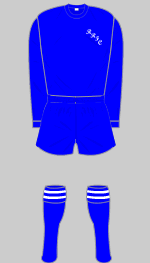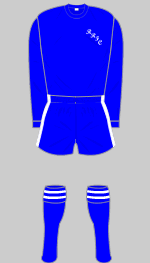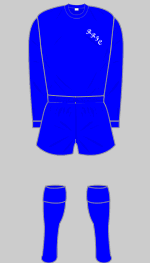Raith
Rovers
Formed 1883
Elected to Scottish Division Two 1902. Withdrew 1917.
Reinstated in Scottish Division One 1919
Kit History
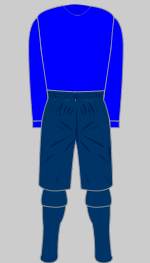
1883 p
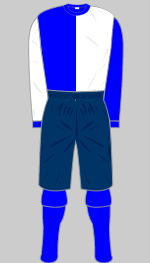
1887 a p
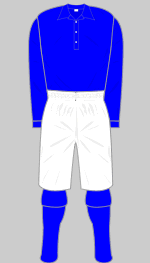
1889 t
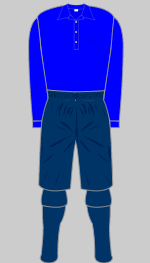
1890 p t
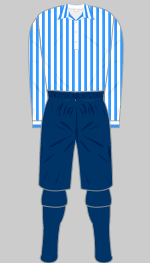
1890-1892 t
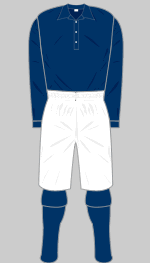
1893-circa1900 a t
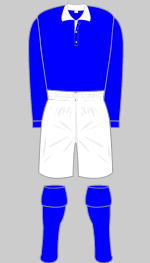
1903-1904 t
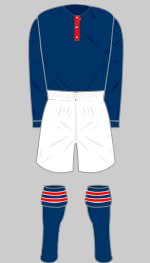
1906-1907 t
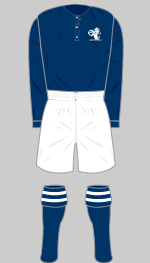
1912-1917 a
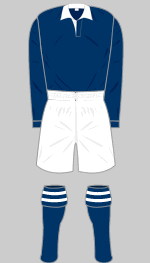
1920-1921 y
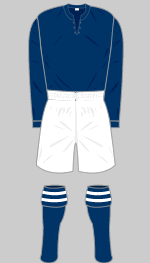
1921-1922 t
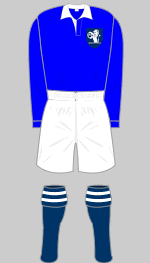
1922-1927 a t
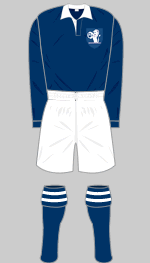
1927-1930 t
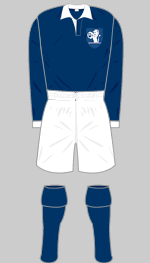
1930-1931 a
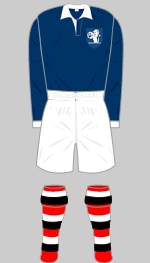
1931-1933 a
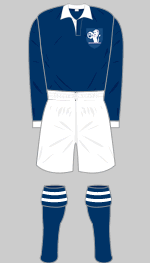
1933-1934 a
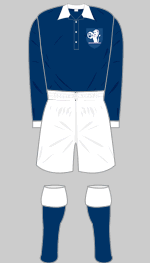
1935-1937 a c d
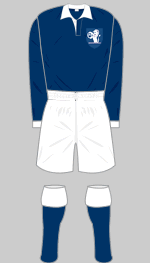
1937-1939 a
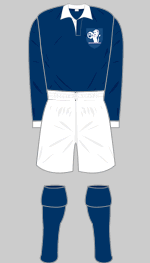
1945-1946 v
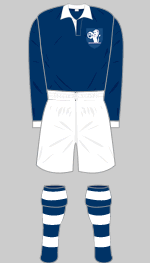
1947-1949 v
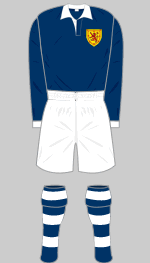
1949-1950 a t x
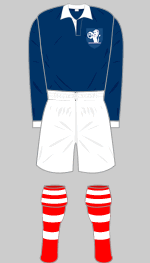
1950-Jan 51 x
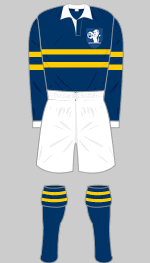
Feb-May 51 m x
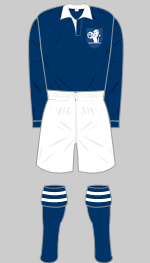
August 1951 x
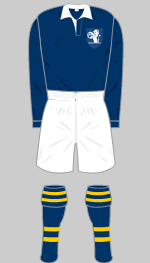
December 1951 x
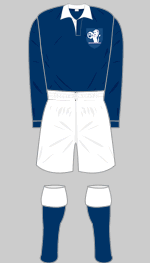
January 1952 x
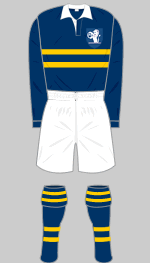
March-May 1952 x

Aug-Dec 1952 x
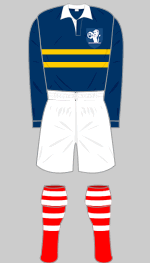
Jan-March 1953 t x
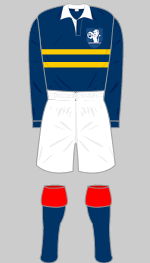
March-May 1953 t x
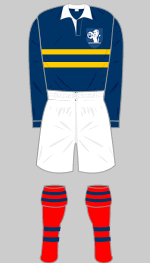
August 1953 x
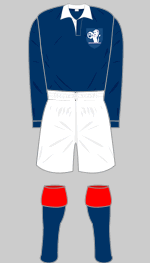
Feb 1954 x
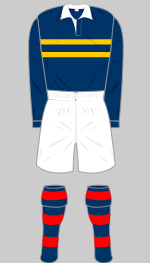
1954-1955 x
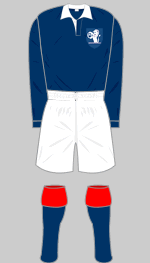
1955-1957 a x
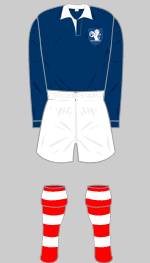
1956-Dec 57 alt a e
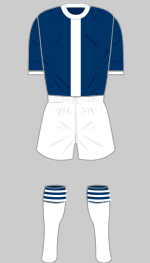
Jan-May1958 a f x
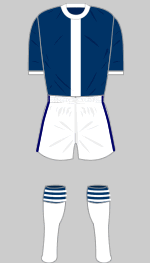
Aug 1958 x
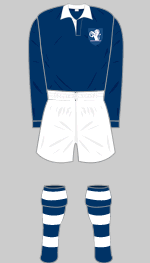
Sept 58-1959 t
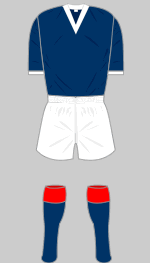
1959-1960 a c t
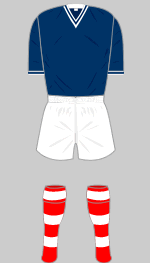
1960-Oct 1962 a x
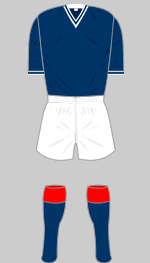
Oct 61-1962 x
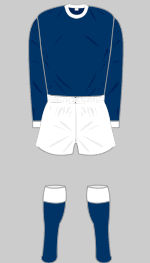
1962-1963 a
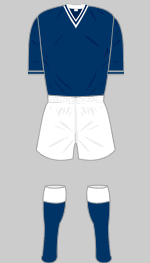
1962-1963 alt v
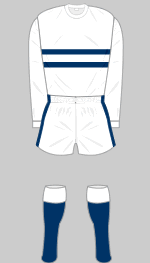
1963-1964 a g
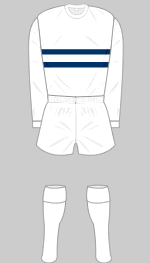
1964-1969 a t
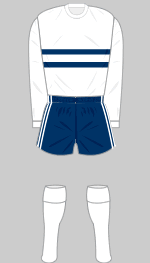
1969-1970 x

1970-1971 A
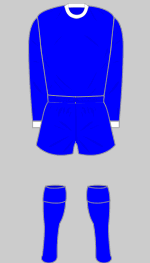
1971-1972 w
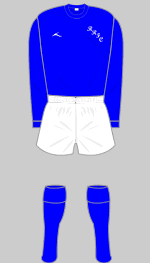
1975-1976 v
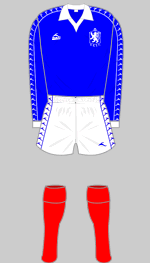
1976-1977 v
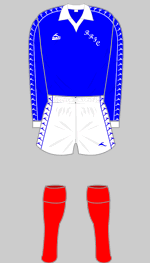
1977-1978 a
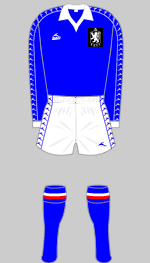
1978-1982 a i k u
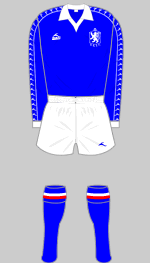
1982-1983 x
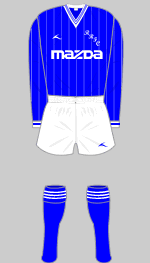
1984-1985 u
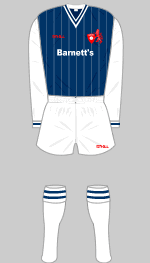
1985-1986 k u
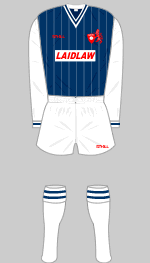
1986-1987 e u
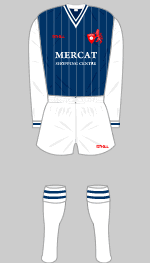
1987-1988 u
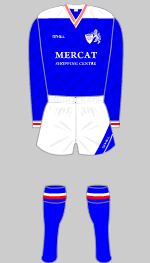
1988-1989 e
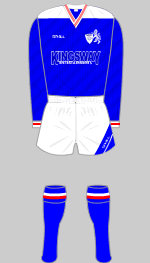
1989-1990 k
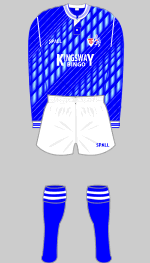
1990-1991 s
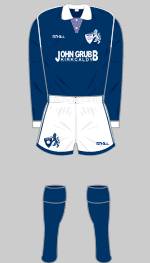
Aug1991-Feb1992 j x
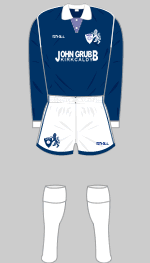
Mar 1992-1993 j x
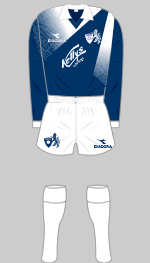
1993-1994 j
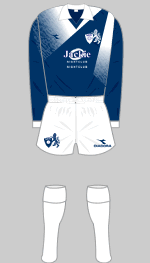
1994-1995 j
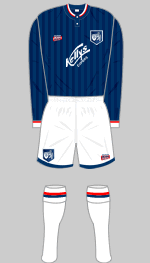
1995-1997 j q u v x
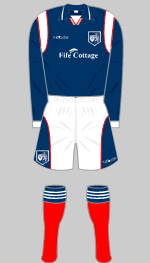
1997-1998 k u
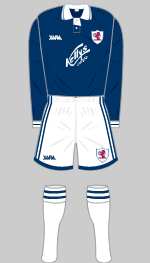
1998-1999 u
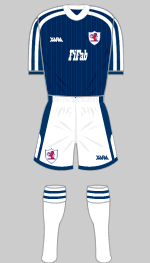
1999-2000 l
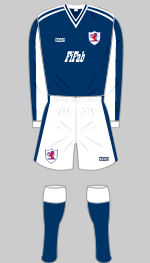
2000-2001 k
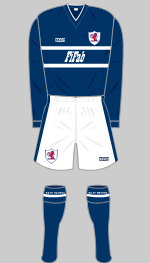
2001-2002 k
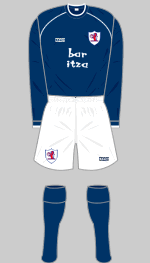
2002-2003 k
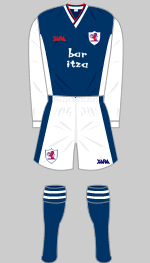
2003-2005 k
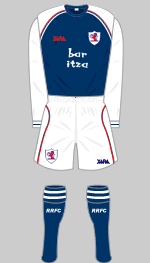
2005-2006 k
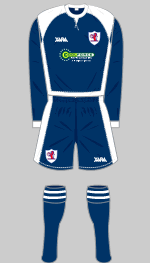
2006-2007 k
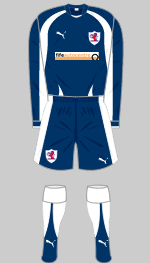
2007-2008 n
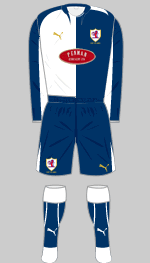
2008-2009 o
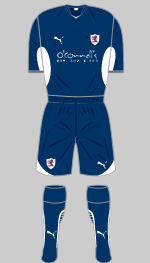
2009-2010 o
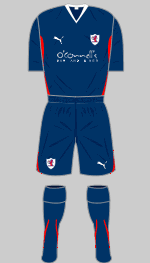
2010-2011 o
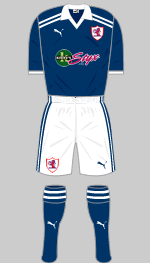
2011-2012 o z
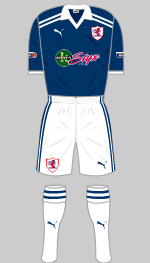
2012-2013 z
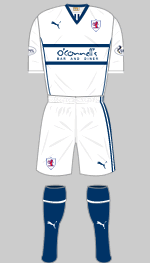
2013-2014 o
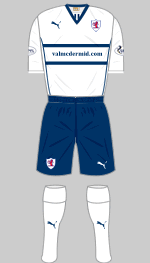
2014-2015 o
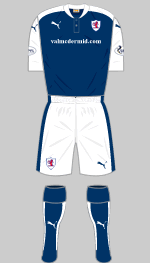
2015-2017 o
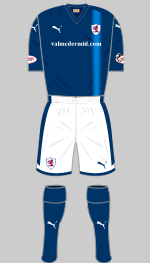
2017-2019 o
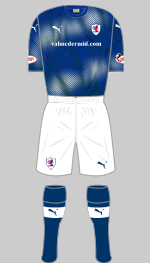
2019-2020 o
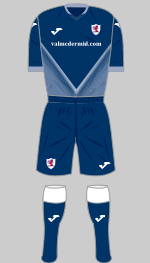
2020-2021 o
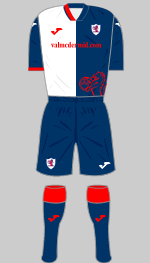
2021-2022 o
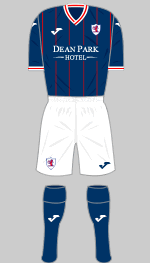
2022-2023 o
Background
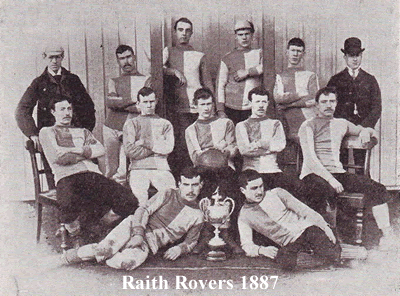 Raith Rovers are based in Kirkcaldy, an industrial
coastal town in the Kingdom of Fife to the north of Edinburgh. Their
local rivals are East Fife, Cowdenbeath and Dunfermline Athletic.
Raith Rovers are based in Kirkcaldy, an industrial
coastal town in the Kingdom of Fife to the north of Edinburgh. Their
local rivals are East Fife, Cowdenbeath and Dunfermline Athletic.
In 1891, Raith joined the Midland League for a single season. They appear to have played only friendly and cup matches until 1901 when they joined the Northern League. The following season they applied successfully for membership of the Scottish Second Division. They finished first, second and first between 1908 and 1910 when they were finally elected to Division One. In 1913 they reached the Scottish Cup final for the first and so far, only, time, losing 0-2 to Falkirk.
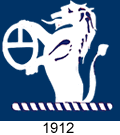 The first evidence of a crest comes from the 1912-13 season, which is very early: few Scottish clubs wore crests at the time. The lion rampant (a common Scottish motif) is holding a belt buckle device which comes from the copat of arms of the Ferguson clan. Lord Ferguson Munro, head of the clan, was Rovers' first president. This was embroidered onto a square patch and sewn on to the players' shirts. After 1922 it was embroidered
The first evidence of a crest comes from the 1912-13 season, which is very early: few Scottish clubs wore crests at the time. The lion rampant (a common Scottish motif) is holding a belt buckle device which comes from the copat of arms of the Ferguson clan. Lord Ferguson Munro, head of the clan, was Rovers' first president. This was embroidered onto a square patch and sewn on to the players' shirts. After 1922 it was embroidered 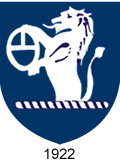 onto a shield.
onto a shield.
Raith struggled at the higher level and in 1915 they had to seek re-election. The following season they finished last but, with the Second Division suspended, there was no re-election process that season. At the end of the 1916-17 season, Raith, Aberdeen and Dundee were persuaded to retire from the league due to the difficulty of travelling during wartime. They were welcomed back in 1919.
In 1922, Rovers enjoyed their finest ever season,
finishing third in Division One behind the Old Firm. In 1926 they were
relegated but they bounced back immediately only to drop back into the
Second Division in 1929. Here they languished for nine seasons before
winning the divisional championship in 1938. They could not cope, however,
with the higher standards and 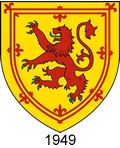 were relegated immediately, having finished
bottom of the twenty team First Division.
were relegated immediately, having finished
bottom of the twenty team First Division.
After the Second World War, Raith resumed their career in Division “B” (the second tier) and in 1949 they were promoted as champions. Perhaps to mark this achievement, the Scottish rampant was adopted the following season before the traditional badge was reinstated.
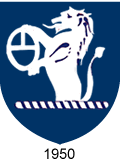 The club consolidated in mid-table throughout
the 1950s, managing to finish fourth in 1957 but in 1963 they went back
down to the Second Division for four seasons. Two seasons of struggle
back in the top division ended with relegation in 1970 and in 1975,
the club was placed in the new Division Two (the new third tier) following
the formation of the Premier Division.
The club consolidated in mid-table throughout
the 1950s, managing to finish fourth in 1957 but in 1963 they went back
down to the Second Division for four seasons. Two seasons of struggle
back in the top division ended with relegation in 1970 and in 1975,
the club was placed in the new Division Two (the new third tier) following
the formation of the Premier Division.
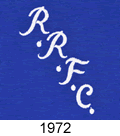 Crests fell out of favour in the 1960s and in a further attempt to modernise their appearance, the team adopted a smart white strip with navy bands (previously their change kit). All blue was adopted in 1972 with simple cypher appeared on the shirts. A new badge was introduced in 1976 and for a few seasons this alternated with the cypher until 1985, when another new design was introduced.
Crests fell out of favour in the 1960s and in a further attempt to modernise their appearance, the team adopted a smart white strip with navy bands (previously their change kit). All blue was adopted in 1972 with simple cypher appeared on the shirts. A new badge was introduced in 1976 and for a few seasons this alternated with the cypher until 1985, when another new design was introduced.
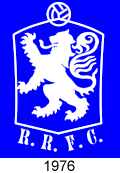 The club bounced between the Second and First
Divisions until 1987 when they settled into the First Division (tier
two) for the next five seasons. In 1993 Raith ran away with the First
Division title and made their debut in the Premier Division. The disappointment
of relegation the following season was set off by a remarkable victory
over Celtic in the Coca Cola Cup (formerly the Scottish league Cup)
and a return
The club bounced between the Second and First
Divisions until 1987 when they settled into the First Division (tier
two) for the next five seasons. In 1993 Raith ran away with the First
Division title and made their debut in the Premier Division. The disappointment
of relegation the following season was set off by a remarkable victory
over Celtic in the Coca Cola Cup (formerly the Scottish league Cup)
and a return 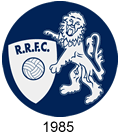 to the Premier Division in 1995. The Cup win meant that
Raith qualified for the UEFA Cup where they were knocked out by eventual
winners, Bayern Munchen after leading 1-0 at half-time in the Olympiastadion.
to the Premier Division in 1995. The Cup win meant that
Raith qualified for the UEFA Cup where they were knocked out by eventual
winners, Bayern Munchen after leading 1-0 at half-time in the Olympiastadion.
This success enabled the club to redevelop their
Stark’s Park ground, which was opened in 1995. However, Raith
could not hang on to their place in the Premier Division and were relegated
in 1997, 13 points adrift at the foot of the table. 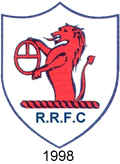 Worse was to follow
in 2002 when they slipped briefly into the Second Division (third tier).
Worse was to follow
in 2002 when they slipped briefly into the Second Division (third tier).
The traditional crest was reinstated in 1998.
The 2004-05 season proved disastrous: with a team made up almost entirely of continental players from the lower French divisions Raith finished last with just 16 points and returned to the Second Division. The following season the very future of the club was thrown into doubt when property developers Colin McGowan and Alex Short, whose company, West City owned a 50% stake in the club, threatened to sell Stark’s Park for housing. After months of wrangling a deal was struck and the New Raith Rovers Limited consortium completed a £1.2m buyout in December 2005 to secure the club’s future.
Stark’s Park is situated in Pratt Street, Kirkcaldy, perhaps the most unfortunate address in football.
To mark their 125th anniversary, Raith revived the halved shirts, originally worn in 1887, for the 2008-09 season. Fittingly, the team won their divisional championship that season. Another retro inspired kit appeared in 2013-14 based on the iconic strip won 50 years earlier. The best selling crime writer, Val McDermid, who hails fom Kirkcaldy, first sponsored the team shirts in 2013-14.
When the 2019-20 season was brought to an early close, Raith were top of League One, a point ahead of Falkirk. Final positions were settled on a points-per-game basis, resulting in Raith being declared champions by 0.03 of a point. The following season Rovers reached the promotion play-offs but were knocked out by Dundee at the semi-final stage.
Sources
- (a) Alick Milne
- (b) Scottish Footballers in the Great War
- (c) London Hearts
- (d) East Fife official site
- (e) Ralph Pomeroy
- (f) London Hearts
- (g) relichtieplus
- (h) relichtieplus
- (i) St Johnstone FC - Images of Sport (Alastair Blair 2003)
- (j) Raith Rovers FC 1991/92 - 1995/96 Images of Sport (Tony Finister 2002)
- (k) SNS Pix
- (l) Classic Kits
- (m) Colin Davidson
- (n) Football Shirt Culture
- (o) Raith Rovers official website
- (p) John Litster
- (q) JB Knight
- (r) My photo library
- (s) Willie Kay
- (t) Raith Rovers On-Line History - a brilliant project set up for the club's 125th anniversary in 2008
- (u) Donald Gellatly (HFK Research Associate)
- (v) Keith Ellis
- (w) East Fife v Raith Rovers programme (28 August 1971) submitted by Ralph Pomeroy
- (x) Ian McConnel
- (y) Football & the First World War
- (z) Michael Gluck
- (A) The Celtic Wiki
